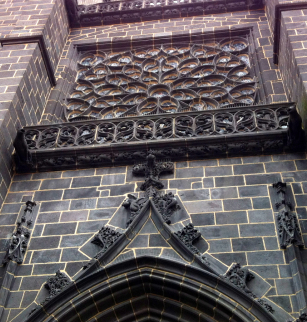Église Saint-Eutrope

Inaugurated in 1862, the Église Saint-Eutrope is a fine example of Auvergne-style neo-Gothic architecture, with its austere appearance lent by the Volvic stone. It is listed as a Historic Monument.
The church sits on the site of one of the first churches of Clermont, dating back to the 5th century and dedicated to Saint Stephen. It was destroyed in the 8th century and rebuilt in the 12th century, dedicated to Saint Patroclus. In 1802 after the Concordat, it was dedicated to Saint Eutrope, the first bishop of Saintes. The church was in very poor condition and was partly demolished in 1827, with only the narthex and the baptistery preserved.
In 1849, the Abbot Honoré Daupeyroux was appointed parish priest. When he saw how dilapidated his church was he asked the prefecture to build a new building. The town council agreed to his request in 1855. The work was assigned to architect Hugues Imbert (1802-1876) who put forward a proposal for a neo-Gothic building made from Volvic stone, with sleek and harmonious lines. The church was inaugurated in 1862. However, the choice of Gothic style was criticised in 1857 by the committee of diocesan inspectors, who feared that the building would be an “imitation of the cathedral, including its flaws”. The Église Saint-Eutrope was listed on the historic monuments registry in 1907 and was fully restored by the city of Clermont-Ferrand in 2014.
The two limestone statues on the western façade, of Moses and David, are by Clermont-based sculptor Jean-Baptiste Chalonnax (1819-1902). The statues on the southern façade, as well as the altars, come from the workshops of the most famous sculptor of religious objects of the time: Hugues Fabisch.
The stained-glass windows are by the renowned Clermont master glassmakers: Émile Thibaud (1806-1886), Lucien Chatain (1842-1886) and Antoine Champrobert (1834-1905). In the transept, the Martyrdom of Saint Lawrence by Claude Thévenin (1845) was listed on the historic monuments registry in 1997. The frescos in the Chapelle de la Vierge are the work of the painter Louis Dussour (1905-1986) in 1945. They depict events in the life of Christ and the Virgin Mary. The organ was built in 1976 by the famous organ builder Alfred Kern and inaugurated by world-renowned organist Gaston Litaize.
Additional information
Visible from the street only.
Prices
- Free access.


















